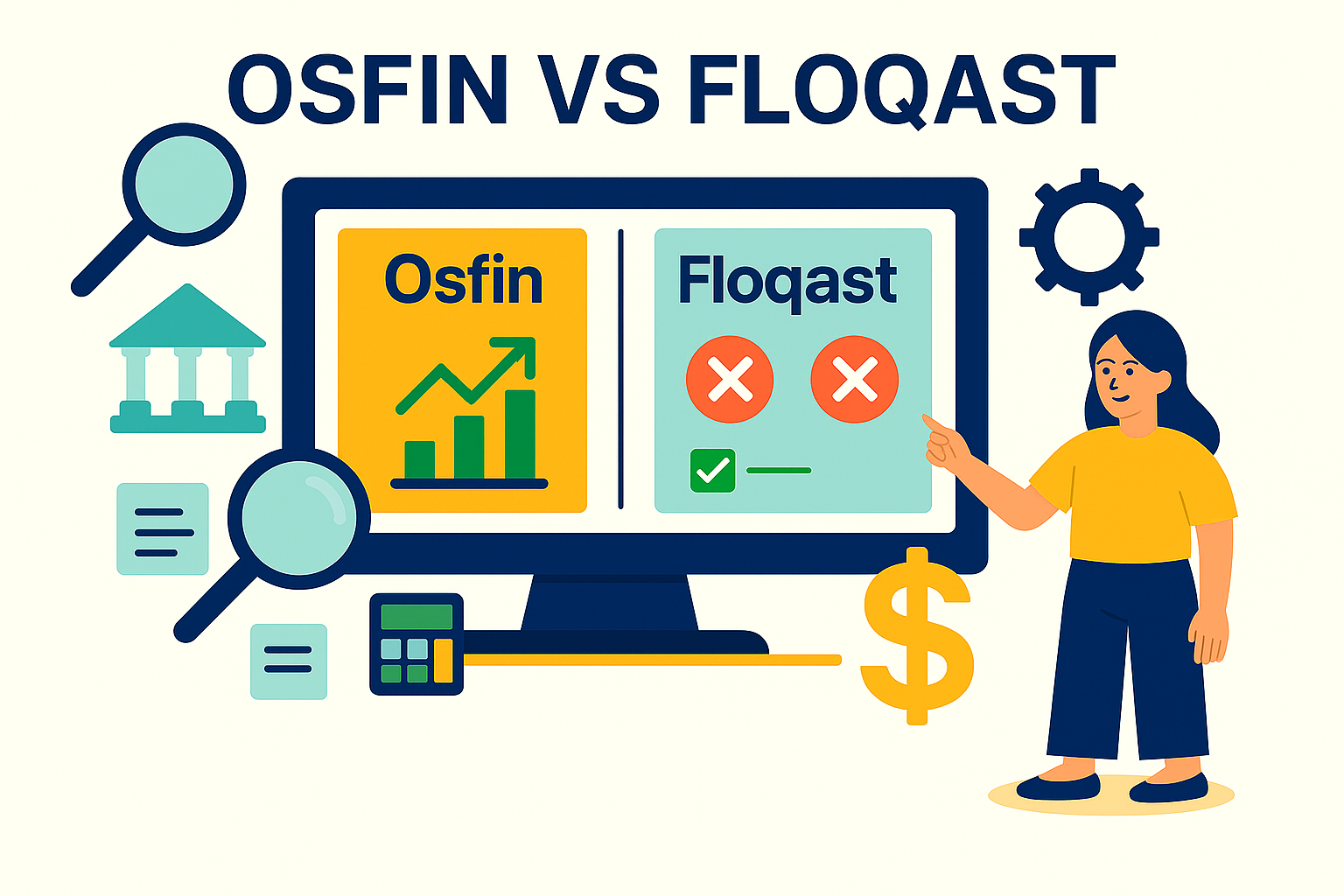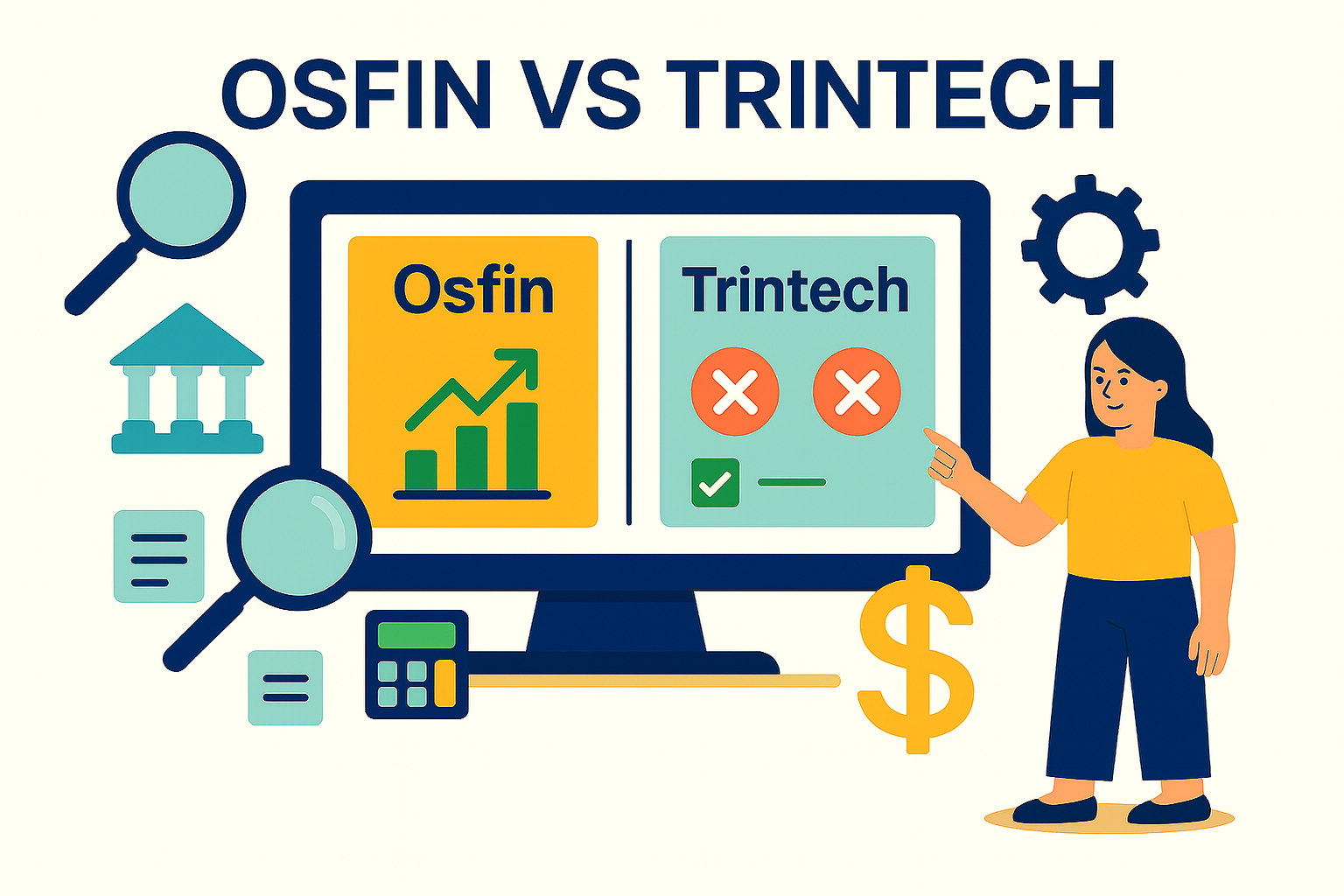Sweep Account: Definition, Working & Benefits
Sweep accounts are a powerful tool that can optimize cash usage for bank clients. In the world of modern finance, by automating the movement of excess funds into investment options, banks can offer added value to clients.
While sweep accounts can be extremely useful as a financial tool, tracking them manually is tricky. Reconciling these sweeps often becomes a complex and time-sensitive task. Automated reconciliation can help in ensuring your records match actual movement, errors are caught early, and cash stays fully accounted for.
In this article, we’ll walk through what sweep bank accounts are, how they work, and how tools like Osfin make managing them a lot simpler.
What Is a Sweep Account?
A sweep account is a type of bank, or brokerage, account that automatically transfers (or "sweeps") excess funds into a secondary account, typically one that is a higher-yield investment option, like a money market fund. This process is automatically triggered when the account’s balance exceeds a certain threshold.
Sweeps typically occur at the end of each business day. They can be set up to pull funds back when needed, keeping your operating account at a target balance.
With the concept in place, let’s move on to how you actually set up a sweep account.
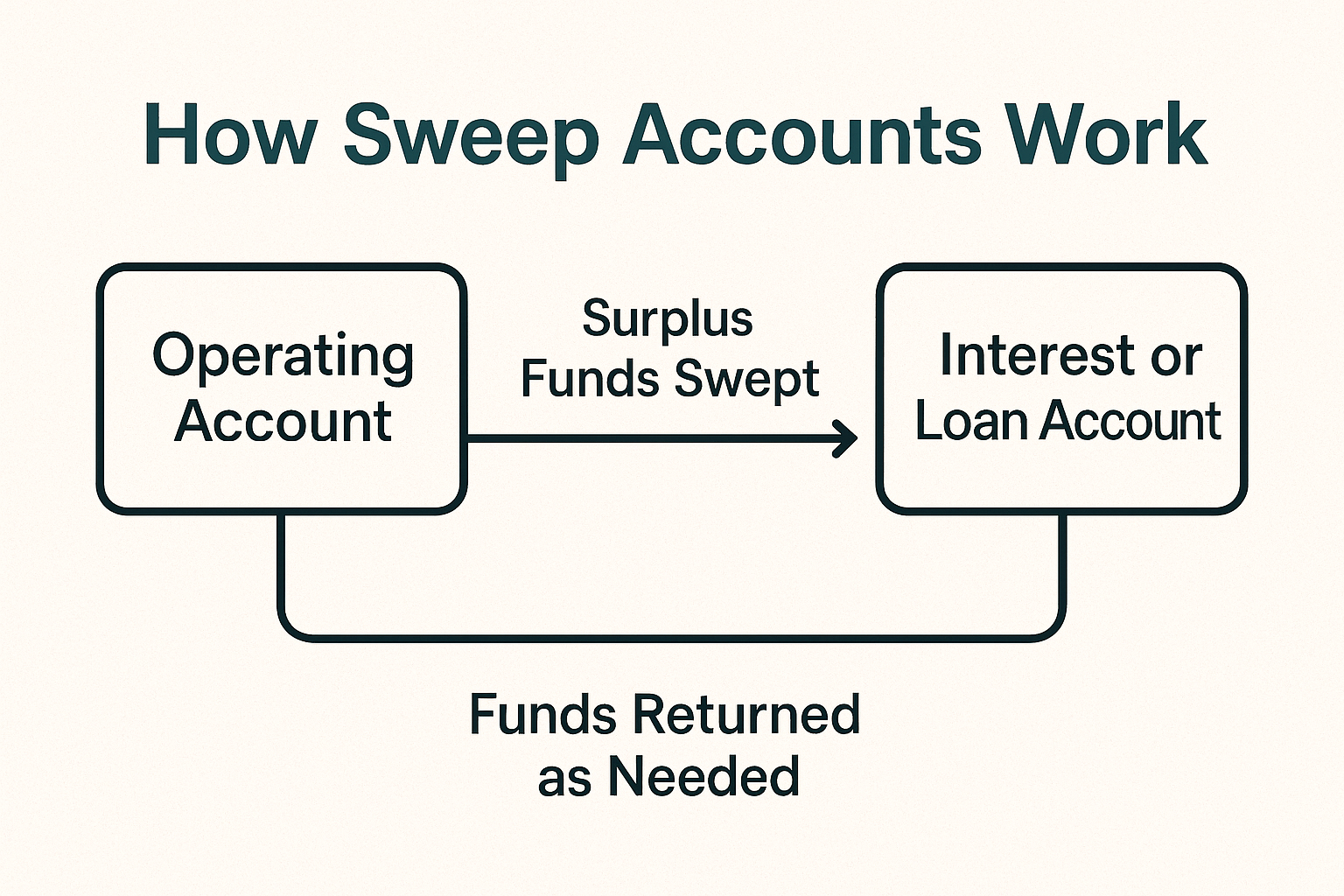
How does a sweep account work on a day-to-day basis? Let’s find out in the next section.
How Do Sweep Accounts Work?
Sweep accounts operate through automated cash movement based on set rules.
Here’s the typical workflow: In a typical setup, the client’s operating account handles daily transactions like deposits, payments, and transfers.
When the balance in this account goes above a certain “threshold”, the extra funds are swept into another account. This could be a money market fund or another low-risk investment account that earns more interest than a typical checking account.
If the checking account balance drops below the target, the sweep account will automatically move money back in to cover the difference. This setup helps make sure that your client's operating account always has a balanced amount of money.
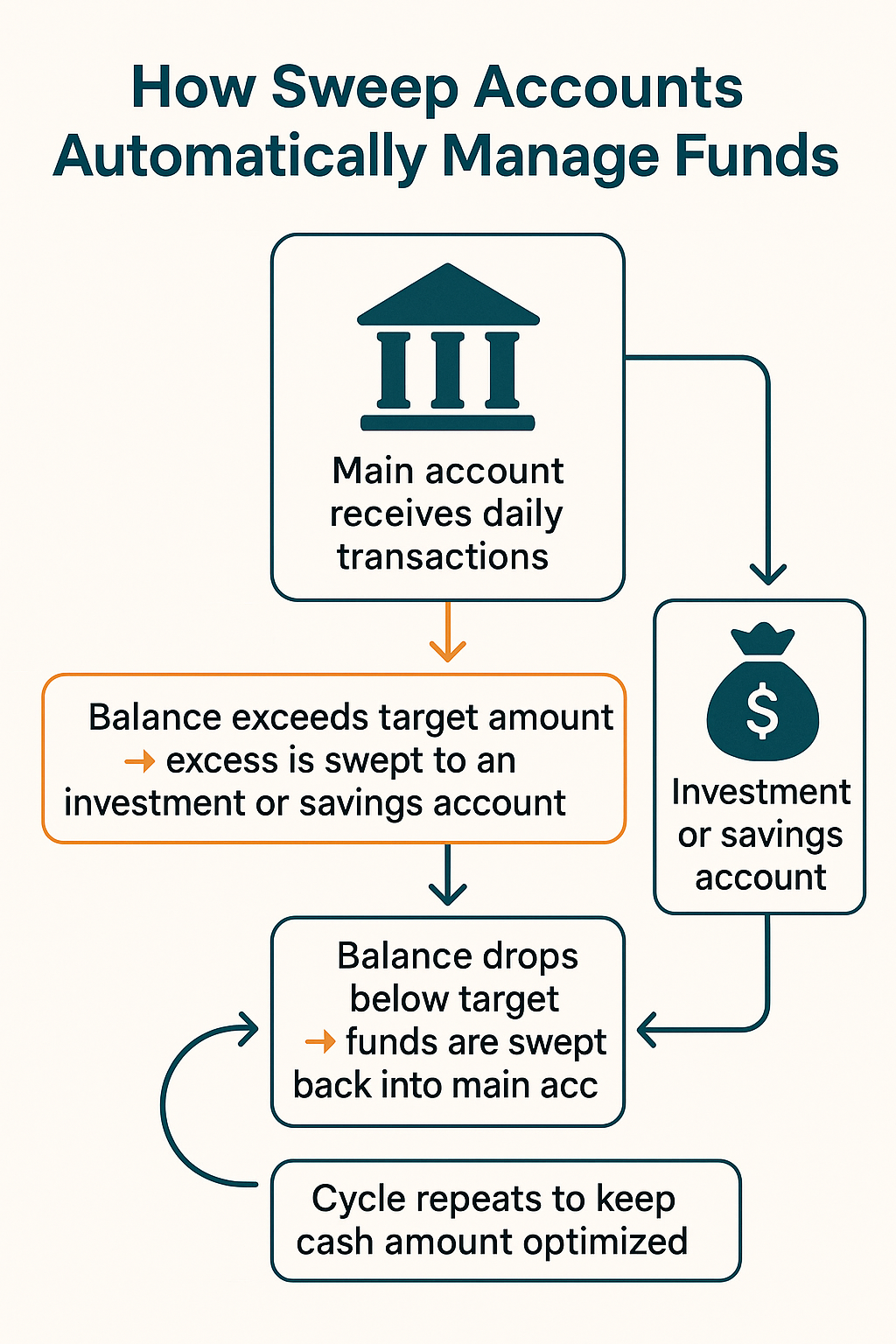
Now that you know how sweep accounts manage money, let’s look at the different types of sweep accounts that can be set up.
{{banner2.1}}
Types of Sweep Accounts
Sweep bank accounts come in various forms tailored to different financial strategies. Here are two common types:
1. Money Market Sweep Account
This type allows excess funds from a checking account to be automatically transferred into a money market account, helping you earn additional interest. If your checking account balance drops below a set threshold, money is moved back in.
2. Loan or Credit Sweep Account
This option uses excess balance to automatically reduce outstanding loan balances. It helps ensure timely repayments and, consequently, better debt management.
Reconciling money market sweep accounts involves taking into consideration the interest earnings and transfers between deposit accounts. Loan sweeps require matching repayments across deposit and loan systems, impacting both cash and liability balances. Reconciliation should take these into account.
Each of these options serves different business needs. This can become even more distinct when comparing personal and business sweep accounts.
Personal vs. Business Sweep Accounts
While personal sweep accounts move uninvested funds into accounts like money market funds, business sweep accounts are used for strategic cash and debt management.
Here's a closer look at how personal and business sweep accounts differ.
Banks deploy sweep structures for business clients with stable cash cycles to maximize yield and reduce idle funds across operating accounts.
Let’s look at the benefits that make sweep accounts such a good investing option for businesses.
Benefits of Sweep Accounts for Banks
When set up correctly, sweep accounts bring measurable advantages to both banks and clients. Here’s a few:
1. Optimize Interest Allocation Automatically
By moving idle funds into designated sweep destinations, whether investment accounts or loan offsets, banks can help clients extract more value from their balances. This also allows institutions to better structure interest-bearing product offerings while keeping the client’s operating account funded.
2. Reduce Manual Intervention
Automated sweep logic ensures funds are rebalanced without manual fund transfers. This reduces load on back-office operations and treasury teams, especially when managing thousands of client accounts with daily sweeps.
3. Strengthen Liquidity Management
Sweep rules help maintain target balances across accounts while ensuring shortfalls are automatically backfilled. For banks managing client liquidity across divisions or cash pools, this enables tighter oversight and improved control.
4. Improve Credit Risk Management
Loan-linked sweeps can automate repayment using surplus funds, helping banks reduce outstanding exposures. This improves DPD (Days Past Due) metrics and lowers credit risk for institutions handling large volumes of small-ticket credit.
5. Enable Fast Reversals and Client Settlements
Sweep-linked accounts offer quick access to funds when operating account balances dip. This speeds up transaction processing and allows financial institutions to respond quickly to fund availability issues, reducing friction in client services.
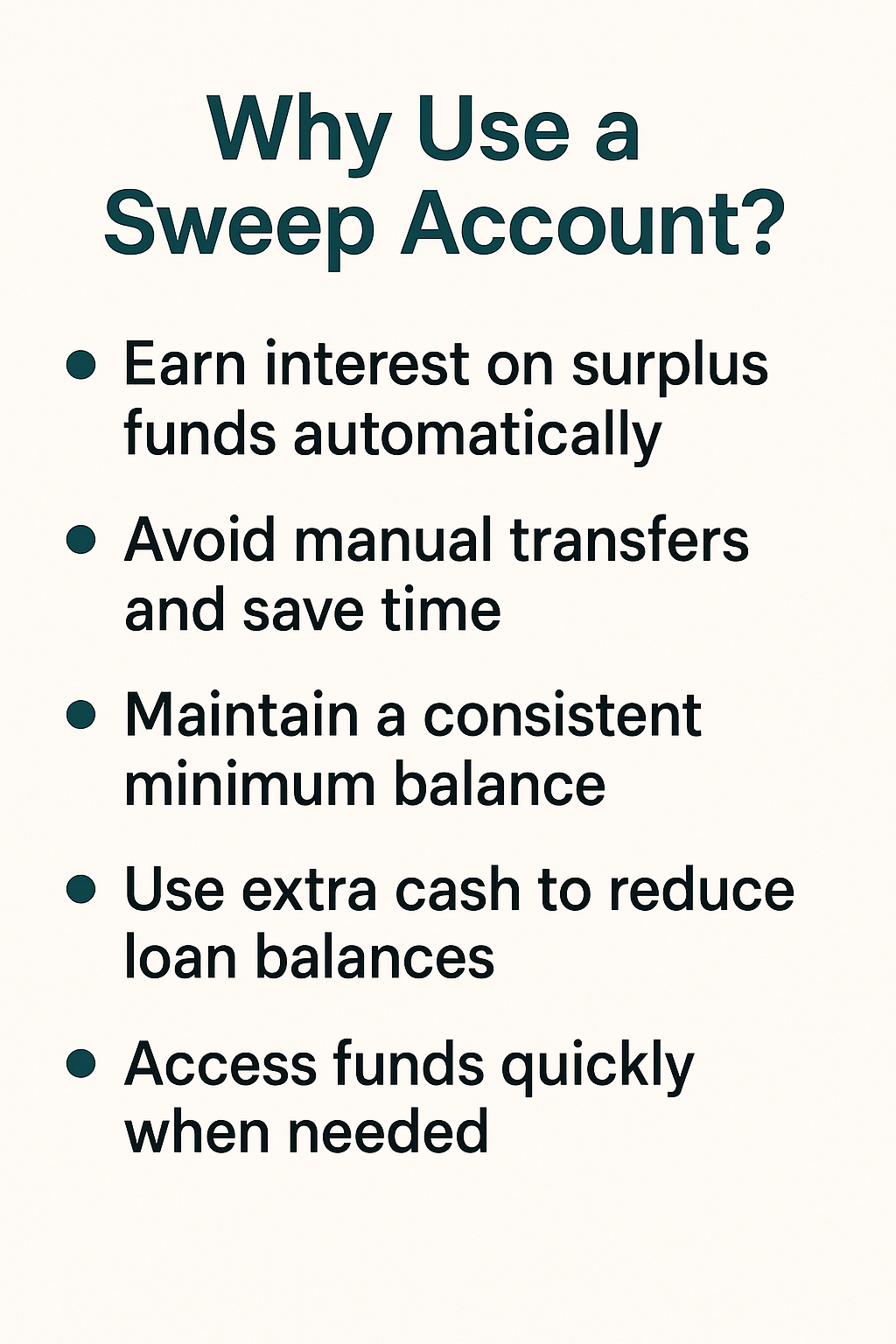
{{banner2}}
The Drawbacks of a Sweep Account
While sweep accounts are effective for optimizing client balances and improving asset utilization, they introduce complexity on the backend for banks and fintechs.
Managing sweep logic across thousands of accounts requires consistent coordination between core banking systems, investment platforms, and loan ledgers. Without the right infrastructure, this leads to:
- Higher operational overhead for configuring, executing, and validating sweep movements across accounts.
- Fee structure misalignments, especially when sweep rules vary by client tier, balance threshold, or investment product.
- Reconciliation complexity, as sweep activity often happens in overnight batches, creating timing mismatches and masking intra-day cash positions.
- Limited transparency, particularly when sweeps impact both sides of the balance sheet—cash assets and liabilities (as in loan-linked sweeps).
- Compliance and reporting risks, especially when sweep-related transactions aren’t logged or tagged consistently across systems.
These challenges multiply in high-volume environments and demand real-time reconciliation to maintain ledger integrity.
Luckily, tools like Osfin can make this process a lot easier for you. Let’s find out how.
{{banner3}}
Simplify Sweep Reconciliation with Osfin
Sweep transactions often occur outside regular transaction windows and may not appear clearly in core statements or daily ledger snapshots. This creates timing mismatches, incomplete records, and difficulty in tracing fund movements, especially across multi-account or intra-day sweeps.
Manual reconciliation in such cases is inefficient. It slows down exception resolution, increases exposure to errors, and weakens audit readiness.
Osfin.ai eliminates these risks by automating sweep reconciliation at scale:
Connect Data Seamlessly:
Osfin.ai can automatically ingest sweep data across ERPs, CBS, and financial systems. Sweep data can be integrated continuously via 170+ connectors across systems and platforms.
Match Accurately:
Sweep transactions are matched to internal records in minutes. Osfin auto-matches sweep entries against ledger transactions using AI-trained models, even in cases of partial matches or delayed postings.
Scale with Your Workflow:
Osfin adapts to your sweep types, and can grow with your transaction volume effortlessly. Even as data increases, Osfin’s efficiency remains a match.
Ensure Audit Trail:
Real-time dashboards and audit trails offer clear oversight of every movement. This lets you keep track of your financial status and stay compliance-ready.
Catch Discrepancies Early:
With Osfin, you can stay updated on unusual or failed sweep activity as it happens, letting you catch financial errors and discrepancies early.
Automate Exception Tagging and Routing:
Osfin doesn’t just identify unmatched sweep transactions, it classifies each exception by root cause (e.g. timing issue, format error, duplicate) and automatically routes it to the appropriate team for resolution, minimizing manual triage and delays.
Detect Duplicates and Outliers Instantly:
During ingestion, Osfin flags duplicate sweep transactions or unusual patterns, like unexpected reversals or incorrect sweep directions, before they distort reconciliation results.
Customize Rules with No-Code Builder:
Finance teams can configure sweep-specific matching rules, tolerances, and escalation workflows using Osfin’s no-code rule builder. This allows for full control over how sweeps are tracked, validated, and resolved, without IT intervention.
Built-In Security and Compliance Controls:
Osfin is SOC 2, PCI DSS, ISO 27001, and GDPR compliant. With 256-bit SSL encryption, role-based access control, and two-factor authentication, you get complete protection for sweep-related financial data and access governance.
Expert Support and Rapid Setup:
Osfin requires minimal IT effort to implement. From configuration to training, our support specialists help your team onboard quickly and scale reconciliation workflows confidently.
Sweep accounts are a strategic way for banks to help clients make the most of idle, excess cash. Whether through a financial institution or a brokerage, they’re a useful tool for maximizing returns. For clients with highly volatile inflows, institutions may delay sweep enablement until a stable cash baseline is observed,ensuring sweep logic works as intended and reconciliation isn’t impacted by erratic movement.
That’s where Osfin.ai can help. With automated reconciliation built specifically for financial institutions, Osfin keeps balances accurate and operations running smoothly, even as transaction volumes grow. Its high-speed engine matches up to 30 million records in just 15 minutes with 100% accuracy, eliminating delays caused by manual reviews. Osfin helps banks maintain ledger integrity, streamline exception handling, and deliver a seamless experience for clients across varied sweep structures and account types.
{{banner1}}
FAQs on Sweep Account
1. How can banks configure sweep thresholds and logic across multiple accounts?
Banks can set sweep thresholds, frequency, and direction using rule-based configurations within their core banking or treasury platforms. With Osfin.ai, these rules can be mirrored in reconciliation workflows to validate sweep activity against expected behavior automatically.
2. Are sweep accounts insured?
Sweep accounts are insured only when the primary and linked accounts are covered under FDIC or RBI protection. However, if funds are swept into mutual funds or investment accounts, they may not be insured, so it’s important to verify coverage.
3. Can sweep accounts cause overdrafts?
Sweep accounts can cause overdrafts if not configured correctly. If too much money is swept out or there are delays in incoming funds, it can result in unexpected cash shortfalls that disrupt daily operations.
4. How do sweep accounts affect reconciliation?
Sweep accounts affect reconciliation because they involve frequent fund transfers. These can cause timing mismatches in account balances. Consequently, it becomes essential to use reconciliation systems that automatically identify, match, and clear these entries. Osfin.ai can completely handle all this and more.
